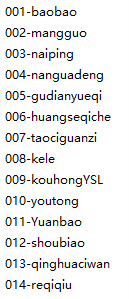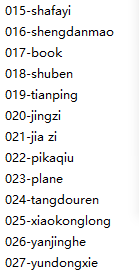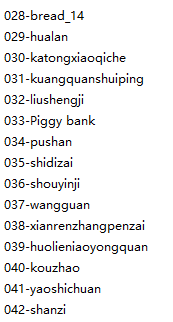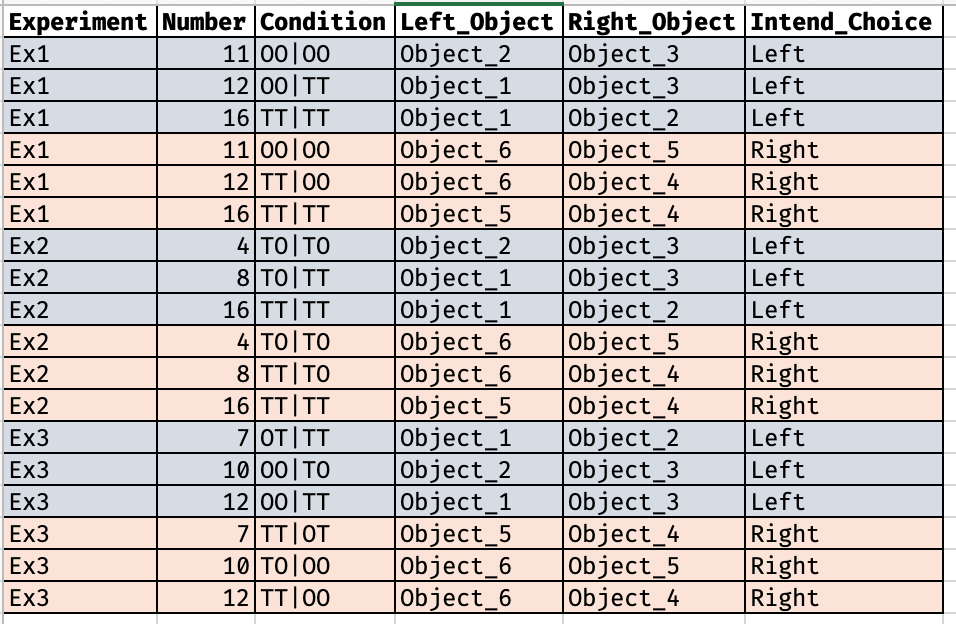Name and sequence number of objects ¶



Groups of boxes and objects ¶
Object preference ordering ¶
Experiment Design: Objects to Trials ¶
- Given any 6 objects, satisfying “Object 1 > Object 2 > … > Object 6”, where “A > B” means “Agent prefers A to B”, we can build 3 + 3 (the latter 3 were simply the mirror of the previous ones) trials for each experiment:
!! Note: Further consideration was needed to determine the necessity of the mirror trials, i.e., whether it is necessary to counterbalance the agent’s choices.

- Suppose we have 15 objects, then 15 groups of objects can then be built:

!! So the object should be different, i.e., should be not of the same type.
Experiment 1: Pilot ¶

- Note: Supposing the agent’s choice was always the LEFT box.
The transparency of participants’ perspective was the same as the agent’s perspective. This provides a baseline to test whether participants have a implicit “negation” to guide their responses. To be specific, if participants have a implicit “negation”, then the object contained in the right box would be ranked lower when the left box was opaque (Number 12) than when the left box was transparent (Number 16). The condition with two opaque boxes (trial 11) provides a baseline for participants’ preferences of the three objects.
Experiment 2 ¶

- Note: Supposing the agent’s choice was always the LEFT box.
In experiment 2, the two boxes were both transparent from the perspective of participants. This gives us a chance to explore how participants’ responses were affected by the agent’s perspective. If participants can take into the account of the agents’ perspective, then there will be a significant difference between the three conditions. To be specific, the rank of object in the right box would be: 08 (Negation) < 16 (Preference) < 04 (Pure Guess).
Experiment 3 (06-28 Update) ¶

- Note: Supposing the agent’s choice was always the LEFT box.
12 (Negation) < 07 = 02 (Preference) < 10 (Guess)
Taken together, when they were asked to report the perception of another person from the perspective differing from their own, if participants could suppress the perception from their own perspective, then their responses would be similar in trials 11, 04, and 10.
Experiment 4 ¶

- Further consideration was needed to determine the necessity of this experiment.
Full List of stimuli ¶
